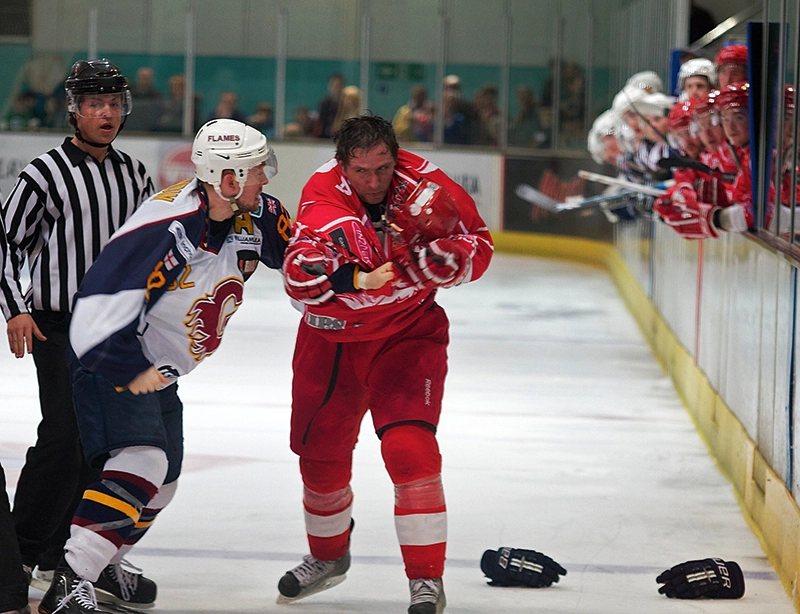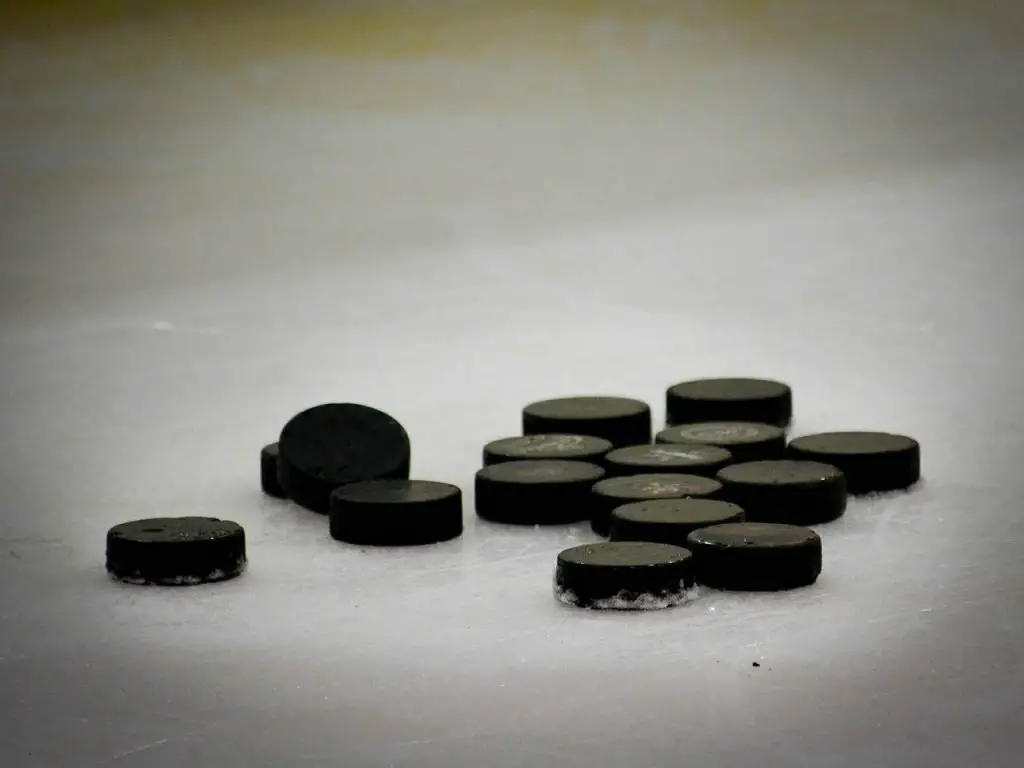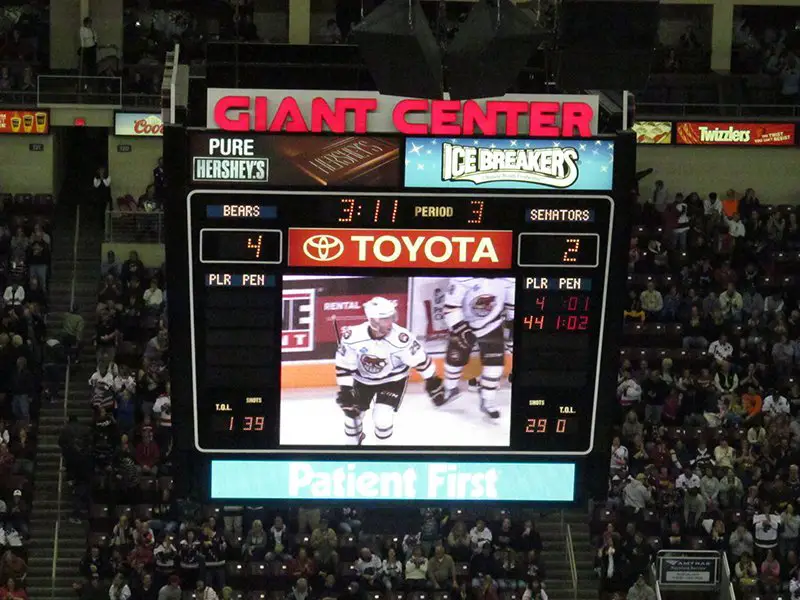Hockey is a sport that has been around for over a century.
Fighting is an integral part of the game. It is a way for players to protect themselves and their teammates. Fighting is also used to settle disputes between players.
I have always wondered why fighting is allowed in our game (Not to say I’m against it). Is it simply because it is a physical sport? Or is it the team aspect and sticking up for each other that brings it out?
This article will answer these questions and more.
Table of Contents
Why are fights allowed?
Why is it that hockey is the only sport that allows its players to fight? Fighting is a part of hockey culture and has been since the inception of the sport. Hockey is a fast sport played with sticks in your hand and blades on your feet, things can get out of control fast. Fighting serves as a neutralizer which prevents players from taking liberties with each other every night and can even prevent injuries.
Although most leagues around the world, including the NHL, have rules in place which penalize players who get into fights, they are still fairly prevalent during games. It’s clear there is no serious intent on removing fighting from the highest levels of the game.
Gary Bettman who is the commissioner of the biggest hockey league in the world, the NHL, has gone on record saying that fighting serves its purpose as a sort of “thermostat”, controlling the temperature of games that would otherwise get out of hand. He also said that fighting “may prevent other injuries”
Although some people are and will continue to lobby for a complete fighting ban, it isn’t likely to happen anytime soon.
History of fighting in hockey
Fighting has been a part of the hockey culture since the inception of the sport.
In fact, The NHL was founded in 1917 and by 1922 they actually had to implement a rule that stated any player involved in fisticuffs would receive a five-minute major penalty as there were too many fights occurring.
This was a different approach than in amateur and college hockey where players would be ejected from the game, and was eventually adopted by most leagues around the world.
How many times does it happen per game?
Although they do still happen every year, it appears as though fights are on the decline due to increased penalties for fighting.
During the 2020-21 NHL season, which was a shortened season with teams playing just 56 games, the league had 196 fights. That’s 0.23 fights per game. 0.23 fights per game is the most fights per game since the 2015-16 season.
Here’s a look at how common fights have been throughout recent years in the National Hockey League.
| Season | Fights | Fights per game |
| 2020-21 | 196 | 0.23 |
| 2019-20 | 194 | 0.18 |
| 2018-19 | 238 | 0.19 |
| 2017-18 | 280 | 0.22 |
| 2016-17 | 372 | 0.3 |
| 2015-16 | 344 | 0.28 |
| 2014-15 | 391 | 0.32 |
| 2013-14 | 469 | 0.38 |
| 2012-13 | 347 | 0.48 |
| 2011-12 | 546 | 0.44 |
Data provide by hockeyfights.com
Are they really that common?
Fights are fairly common in a hockey game. Although, over the past decade, the number of fights per game has dropped significantly.
Some leagues have made more effort than others to reduce the number of fights. Predominantly Junior leagues.
The Quebec Major Junior Hockey League for example has recently introduced a much more severe penalty for fighting, fights in the QMJHL will now be penalized with a ten-minute misconduct and a five-minute major penalty. The instigator of a fight will also receive a two-minute minor penalty additionally.
That’s a total of 17 penalty minutes in the penalty box for just one fight, which is too much time for players to risk being out of the game, this has significantly dropped the number of fights.
As time goes on and these junior players make it to the higher levels of the game, we are likely to see fights in the sport decrease even more.
What’s the point of them?
People who are new to the sport understandably might think there isn’t much of a point to fighting in hockey and can’t begin to fathom why hockey players would get into them. But, fighting does have its place in the game.
Why is fighting such an important part of hockey? Things often get heated during hockey games, fights serve as a thermostat which controls the temperature of a game, deterring players from thinking they can get away with bad hits, landing cheap shots and injuring other players.
If fights were completely against the rules, it’s not that farfetched to think there would be far more injuries, as there is nothing stopping a player from playing recklessly. You would definitely see more players take liberties with their hockey stick, slashing, cross-checking etc.
Is there any strategy involved?
Believe it or not, fighting in hockey requires far more than just two willing participants.
Often times, players whose role on the team is to fight when called upon will watch game tape on the player he will likely end up fighting on the opposing team. Looking for any significant advantage or weakness they can find to get the edge.
In practices, these players will practice techniques such as where to properly grab an opponent to get better leverage on the slippery surface as well as reduce their opponents mobility, reducing the amount of damage they receive back.
To get a better understanding of what goes into hockey fighting strategies, check out this video.
What are fighters called?
In early years of hockey, fighters were often referred to as goons. Today, players who engage in fighting more so than others are commonly called “enforcers” or “energy guys”.
Are players taught to fight?
In the early days of the sport, no one really knew what they were doing. They would drop the gloves and get after it. Now, fast-forward to today.
Players will teach themselves how to fight coming up through the ranks of hockey, starting in junior. By the time they play a professional hockey game, they are well versed in the ways of fighting. Some will even spend their off-season doing fight specific training, like boxing.
In Russia, there has actually been instances where they start teaching kids how to fight in hockey at a young age, something that I personally believe is wrong.
Can anyone get into one?
There is a misconception that there are rules in place stating only designated players on each team are able to get into fights on the ice. There is some truth to that, but it’s not entirely accurate.
Typically, each team will have one to two guys who can fight when called upon, however anyone on the team is free to fight any time they feel the need. Skilled players avoid fighting as much as possible to prevent injuries to the hands.
When skilled players, or players who have never fought before, fight, it can sometimes be funny to watch.
Does fighting affect your team more than others?
It really depends on who you ask.
Hockey fight purists will say fighting provides a spark that the team was missing and can lead to the team playing better. There are multiple cases where teams have come back from deficits following someone on their team getting into a fight.
Then you have the hockey fan who will swear up and down that fighting has no place in hockey and doesn’t do anything but hurt your team. Which can be the case, provided someone receives an instigator penalty and puts their team down a man for two minutes.
It comes down to what side of the fence you sit on. Personally, I think there is some validity to fights providing your team with an energy boost which in turn can make your team play better as I’ve experienced it first hand.
Unwritten rules of hockey fighting
Just as there are official rules that leagues put in place on fighting, the players themselves live by a set of unwritten rules when it comes to fighting in hockey.
- If you are a known fighter, you don’t go after someone who isn’t one unless they instigate it.
- No hits to the family jewels, not biting, no pulling on hair.
- Once a player hits the ground, they are off limits. Stop punching.
- Be sure the fight is accepted, no jumping people.
- If you lay a bad hit or do something dirty, be prepared to answer the bell.
- Fights are 1 on 1, no jumping in or interfering.
These are the most common and basic unwritten rules of fighting in hockey.
If you would like to see a more in depth breakdown of them, further explaining “the code” I suggest you check out this great video.
Best hockey fighters of all time
Throughout the years, there have hundreds of fighters, some better than others. Some of the best hockey fighters of all time are:
Bob Probert
Bob Probert had 3,300 penalty minutes. Probert fought against some of the best fighters in the history of the game and he won nearly every time. No other fighter has ever had the same kind of record as Bob Probert who is widely regarded as the best fighter in he history of the sport.
Tiger Williams
Dave “Tiger” Williams holds the record for penalty minuites with 3,966. A record which will likely never be broken. Williams finished his career having fought 246 times in 962 career NHL games. Williams led the league in penalty minutes three years in a ror and was never scared to back down from anyone bigger than him.
Tie Domi
Listed at just 5’10, Domi is ranked third all-time in penalty minutes with 3,515. He fought everyone and did it well. He topped out at 365 penalty minutes during the 1997-98 season. He averaged over 100 penalty minutes per season for most of his career. He also had 42 penalty minutes in 1989-90, when he played just two games.
Dave Schultz
Schultz nicknamed “the hammer” is one the greatest enforcers in the history of the game. He holds the all-time records for penalty minutes in a single season (472). He also led the NHL in penalty minutes in four consecutive seasons, including two seasons in which he had 20 fights.
Stu Grimson
With a nickname like “the grim reaper” how could I leave Stu Grimson off the list? Grimson wracked up 2,113 penalty minutes in just 729 career games. His biggest rival in the sport was non other than Bob Probert and althought Bob mostly got the better of their exhanges, he did squeak out a few wins against Probert which is nothing to sneeze at.
Marty McSorley
Without Marty McSorely it’s unlikely Wayne Gretzky would have achieved the things he did. Not to take anything away from Wayne, but McSorely and his toughness gave Wayne room to be himself out there on t he ice often obliterating anyone that came in contact with the great one.
Terry O’Reilly
Terry O’Reilly was potentially one of the most feared players on the big bad Boston Bruins. Through 891 NHL games O’Reilly put up an astounding 2,095 penalty minutes. He was known for being very protective of his teammates, including the great one Bobby Orr.
Chris Nilan
Nilan was in more fights than almost anyone else in NHL history. He managed to average more penalty minutes per game than any player league history. He also holds the record for the most penalty minutes in a game (42) and is one of only nine players who passed the 3,000 penalty minutes mark.
Rob Ray
In 900 NHL games, most of which were with the Buffalo Sabres, Rob Ray was involved in 241 fights. He was best known for his rivalry with Tie Domi, who he fought 13 times over the course of his career.
Wendel Clark
Wendel Clark was the biggest guy on the ice but boy did he have a mean streak you didn’t want to be on the other side of. As a rookie, Clark fought 23 times only to outdo himself the following season with 29 fights. He is widely regarded as the toughest player to ever put on a leafs uniform.
Keep in mind, this list is personal opinion and is not ranked in any particular order.
Final thoughts
Fighting is a part of hockey culture. Removing it isn’t as easy as some people may lead you to believe. Whether it belongs in the sport or not will always continue to be a topic of debate.
Realistically, fighting helps keep the game fair and safe protecting players from an abundance of dirty hits and cheap shots that would likely happen if not for the reprocussion of having to answer the bell for your discressions.
Fighting is decreasing in popularity. Although still fairly prevelant in the game, it’s not at the same levels it once was and it’s unlikely to ever go back.





